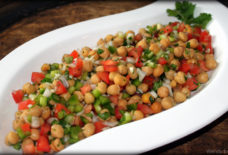Why Arab Americans Like to Eat Lentils
By Noor Almohsin/Arab America Contributing Writer
In Arab cuisine, lentil is one of the major beans used in dishes. Whether in soups, with vegetables, or simply bread. It is one of the ancient crops originally found in the near East- Central Asia. For thousands of years, lentils have been used in Indian and Middle Eastern foods. In fact, India produces fourth of the lentil worldwide production for self-sufficient and export. Because lentil is ancient, it has been mentioned in both holy books: the Quran and the Bible, and it was used in the bread made during Babylonian captive of Jews.
Lentil as a cultivated crops is seeds of a botanical plant called Lens esculenta. This annual plant of the legume family grows in pods that have one or two of lentil seeds. It is available in many types that are different in size, shape, and color. Lentil comes in round, oval, or heart shape disks. The most common types used in the United States are green and brown; whereas, black, yellow, red and orange lentil are more seen in Arab cooking that provides nutty flavor.
And because historically lentil has been available in the Arab region, and has been used in many different Arab recipes, many Arab Americans have carried these dishes with them to the United States, not only because they are yummy, but also very rich in nutrients.
Lentil is known for being rich in iron, but in fact, it is very rich in other substances such as protein, folate, and fibers. It also contains phosphorus, copper, manganese, thiamine, potassium, magnesium, zinc, vitamin B6, and vitamin B6.Therefore, lentil is good for:
- Healthy Heart: Lentil is rich in fiber, folate, magnesium and vitamin B6 that help in improving the cardiovascular system. High levels of homocysteine damages artery and cause heart problems, but lentil that is rich folate helps lowers it, and when combined with vitamin B6 they convert homocysteine to cysteine or methionine that are good for the heart. In addition, magnesium is a calcium channel blocker that helps veins relax, reduce resistance, and improve blood flow that enhances oxygen and nutrients supply to the whole body. Moreover, Lentil has low sodium and fat rich in fibers are helpful in reducing cholesterol and prevents hypertension that, as a result, lead to a happy heart!
- Digestive System: Rich fibers in lentil help with bowel movement and other digestive issues. Also, the carbohydrates in fibers help to balance blood sugar especially for diabetes, insulin resistance or hypoglycemia. In fact, complex carbohydrates are not only filling but also enhance energy production and metabolism that help with weight loss.
- Source of Protein: Lentil is rich in protein; it makes the third highest protein levels of all legumes and nuts. This makes it a great protein source for natural meat-alternative foods for vegan and vegetarians. It also has dense texture, compared with other protein substitutes
- Source of Iron: Lentil contains many of the essential minerals such as iron, magnesium, potassium, copper, and manganese. Therefore, having lentil regularly combats minerals’ deficiencies especially for people with anemia (iron deficiency). It also refills Iron stores in the body especially for menstruating women because it is an essential component of hemoglobin that circulate oxygen from lungs to the whole body. Increased iron is also recommended for pregnant and breastfeeding mothers as well as children and youth.
Traditionally, Arabs use lentil in different formats such as whole, crushed or flour, just like: barley, millet, and wheat. They also use different colors of lentil. For example, cooking black lentil with rice is popular in Egypt and in Levant area. Egyptian Americans make Kushari, which is a dish made of rice, black lentil, chickpeas, pasta, topped with a spicy tomato sauce and fried onions. Similarly, Lebanese, Syrian, Palestinian, and Jordanian Americans make Mujaddara where lentil is cooked with groats, mostly rice, and garnished with sautéed onions.
Moreover, yellow lentil is cooked with spinach and tomato sauce along with other spices as stew or soup. Many Arab elderly believe the combination of lentil and spinach in this recipe is magical for treating iron deficiency.
Lentil soup is universal; it’s hard to claim it is Arab. However, Arabs add lentil to fortify many soup recipes whether were vegetables, grains, or meat broth. In addition, Moroccan Americans are famous with Harira, which is a soup made of tomatoes, onions, rice along with dried legumes including lentil, chickpeas, fava beans cooked with lamb or lamb broth.
Because lentil can enhance taste and texture of foods, some Arabs smooth lentil cooked with onion, garlic, and tomatoes in the blender to make a paste. This paste can be used in different recipes or simply used as a dip.The nutrients, taste, and texture of lentil make it one of the Arab favorite ingredients. Some like to traditionally make bread, and some retain their Arab origin recipes, but one can be creative in substituting items like quinoa in making salads or in smoothies as a superfood element.



